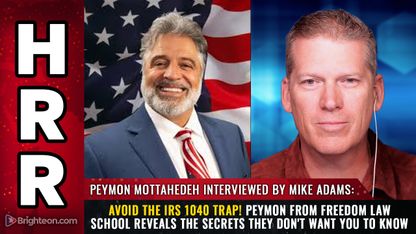
- General Sergey Karakaev announced Russia's development of advanced missile systems, including the "Osina," which are on par with existing Avangard and Oreshnik systems.
- Russia is enhancing its deterrence forces with the deployment of Yars intercontinental ballistic missiles (ICBMs) and the RS-28 Sarmat, capable of reaching the U.S. via the South Pole and evading current ABM systems.
- The Oreshnik hypersonic ballistic missile, which made its debut in a strike on Ukraine, is scheduled for mass production in 2025, raising concerns for NATO and the United States.
- Russia's missile advancements are seen as a response to NATO's expansion and the deployment of American missile systems in Eastern Europe. The Kremlin has signaled its readiness to counter any perceived threats.
- With the New START treaty set to expire in 2026, there are concerns that Russia may increase the number of warheads on deployed missiles, potentially destabilizing international security and sparking a new arms race.
Russia has unveiled a new lineup of missile systems that threatens to renew the arms race and destabilize global security. According to General Sergey Karakaev, commander of the Strategic Missile Forces (SMF), Russia is developing new missile systems that are on par with the existing Avangard nuclear gliders and Oreshnik hypersonic missiles.
Karakaev's bold statements come in the wake of Russia's ongoing efforts to reinforce its deterrence forces with the Yars intercontinental ballistic missiles (ICBMs) and the RS-28 Sarmat, which is set to replace the RS-20V Voevoda. The Sarmat, now in service, boasts a range so extensive that it can reach the U.S. via the South Pole, making it nearly impossible for American anti-ballistic missile (ABM) systems to intercept.
But that's not all. Russia is also working on what it calls the "Osina" missile system, along with other strategic systems yet to be revealed by the Kremlin. These systems are reportedly equipped with advanced warheads that can withstand even the most sophisticated ABM defenses. As Karakaev put it, "There is no place in terms of range that our missiles cannot reach."
The announcement comes at a time when North Atlantic Treaty Organization (NATO) and the West are expanding their strategic ambitions closer to Russia's borders. The deployment of American missile systems in Romania and Poland has been a particular sore spot for Moscow, which views the move as a direct threat to its security. Karakaev was unambiguous in his response: "These missile bases pose no significant threat to our hypersonic capabilities."
It's a clear message to the West: Don't test Russia's patience or military resolve. The Kremlin is not afraid to escalate if it feels its interests are threatened. Karakaev even hinted at the possibility of increasing the number of warheads on deployed missiles after the expiration of the New START treaty in 2026. This move would effectively nullify the arms control agreement that has been a cornerstone of international security for decades.
Oreshnik missiles set for mass production in 2025
But the most worrying development for NATO allies is the emergence of the Oreshnik missile. This intermediate-range hypersonic ballistic missile made its debut in a November strike on a Ukrainian military facility in Dnipro.
Russian President Vladimir Putin gleefully heralded this new weapon as a game-changer, saying it would be a key part of Russia's comprehensive response to Western pressures. The Oreshnik is set to enter mass production in 2025, with all eyes on how NATO and the U.S. will respond to this new threat. (Related: Putin vows to massively expand stockpile of Oreshnik hypersonic missiles as Russia intensifies attacks on Ukraine.)
American officials have already warned that Russia could launch another Oreshnik missile in the coming days. Pentagon spokesperson Sabrina Singh emphasized that the U.S. was closely monitoring Russian preparations and stood ready to bolster Ukraine's defenses against this new threat. The U.S. recently pledged close to $1 billion in new security aid to Ukraine, including advanced air defense systems designed to counter hypersonic missiles.
The strategic chess game is heating up, and Russia is moving its pieces with an aggressive and calculating hand. As the world watches, the question looms: can diplomacy and arms control agreements prevent a new arms race from spiraling out of control or will we soon be facing a new, hypersonic era of Cold War tensions?
Russia's missile development program is not just about military might; it's a message to the West that Moscow is willing to push back against what it sees as NATO's aggressive encroachment. It's a reminder that in the face of Russian aggression, the international community must stand firm and united, or risk entering a new and more dangerous phase of global conflict.
Follow RussiaReport.news for updates on the current wars Russia is fighting.
Watch the video below where Putin says that Oreshnik production is essential to protect Russia and its allies.
This video is from Cynthia's Pursuit of Truth channel on Brighteon.com.
More related stories:
Russia can produce 300 long-range missiles per year, Kyiv intel estimates.
Putin claims Oreshnik missile reduces need for nuclear weapons.
Russia pondering an Oreshnik missile strike on Zelensky's HQ in Kyiv.
Russian state media says Oreshnik missiles can hit American bases within minutes.
Sources include:
Please contact us for more information.

















4 months ago
Reportedly, Oreshnik turns out to be a boogeyman rather than a boujeeman - the damage at YuzhMach (Southern Machinery) is yet to be seen, all classified, could be from previous treatments with traditional medicine. Satellite imagery is not an ironclad proof, on par with 2015 Cali wildfires shown as 2024. Next strike with unclassified damage (public access) would be a good verification. Meanwhile, Oreshnik (Nut Tree Forest) sounds like a good nickname for WH.
4 months ago
"Russian Aggression"?? Who wrote this piece and why is it always recently that it sounds like it was written by leftist woke deranged morons? Is it because AI is used that apparently suffers from anti russian derangement syndrome!? What about NATO/USA aggression with psychopaths in power, including the incoming Trump-Zionist owned regime?
4 months ago
NATO must back off.
The best thing would be the abandonment of NATO.
We do not need a Cold War 2,0 or worse.
4 months ago
"The Oreshnik hypersonic ballistic missile, which made its debut in a strike on Ukraine, is scheduled for mass production in 2025, raising concerns for NATO and the United States."
Why would they reveal the lack of weapons to the enemy which is the whole west?
Unless... The war cannot be won, because in this war there truly is no enemy. And it's all about getting as many people killed. To free land and release riches so the ancient parasites, the 1%, could cobble it all up.